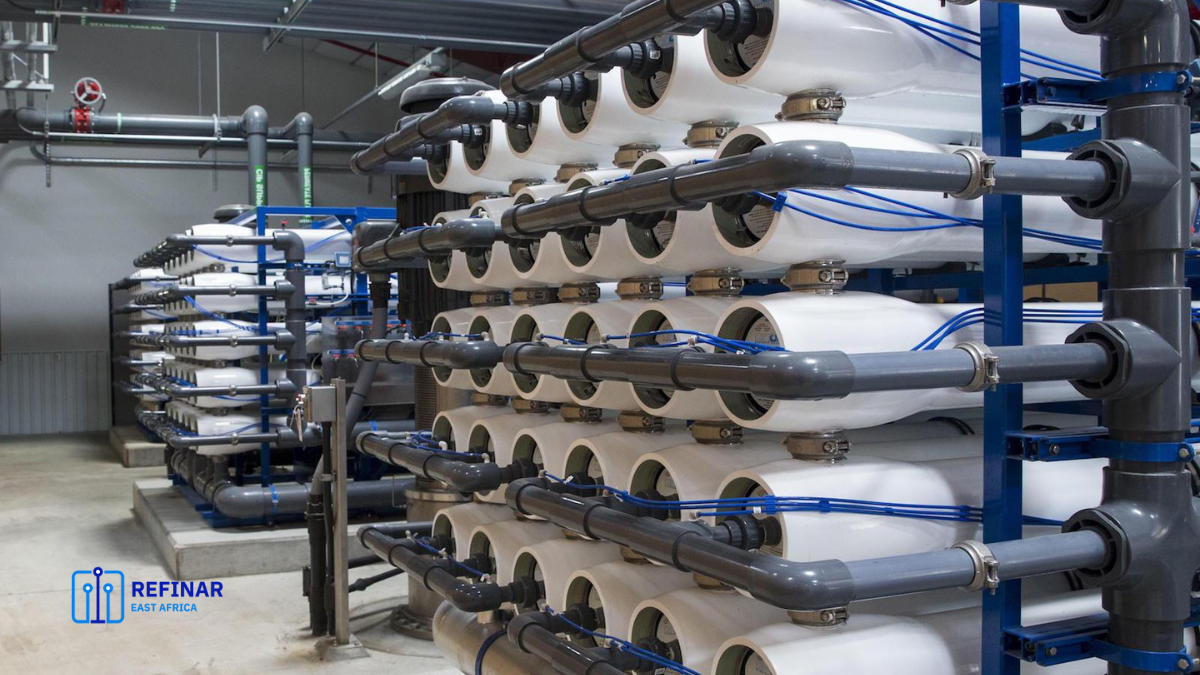In today’s water-scarce world, effectively and sustainably treating wastewater has become a necessity rather than a luxury. Meet reverse osmosis (RO), a game-changing technology that is transforming wastewater treatment. But how does it operate, and what are the main benefits. Continue reading to explore Reverse Osmosis Treatment of Wastewater for Reuse and learn about its huge potential for a cleaner, more water-secure future.
How RO Purifies Wastewater
Reverse osmosis (RO) is a highly effective technology for treating wastewater and producing clean water that can be reused for various applications. It uses a semipermeable membrane to remove dissolved solids, minerals, and other contaminants from water by applying pressure. Here’s how it works:
Process Stages:
Pretreatment:
The wastewater undergoes preliminary treatment to remove large particles, grease, and other substances that could damage the Reverse Osmosis membrane. This may involve screening, sedimentation, and filtration.
High-pressure pump:
The pretreated water is then pumped to high pressure, typically several hundred pounds per square inch (psi). This pressure is necessary to overcome the natural tendency of water to flow from an area of low concentration (clean water) to an area of high concentration (wastewater).
Membrane:
The high-pressure water is forced through a semipermeable RO membrane. The membrane allows water molecules to pass through while rejecting most contaminants, which are concentrated on the other side of the membrane.
Permeate:
The permeate, which is the treated water, is collected and can be used for various purposes, depending on its quality. Depending on the application, further treatment steps like polishing or disinfection may be needed.
Concentrate:
The concentrate, which is the rejected wastewater containing the contaminants, is typically disposed of or further treated depending on its characteristics and regulations.
Benefits of RO for Wastewater Treatment:
High removal efficiency:
RO can remove a wide range of contaminants, including dissolved solids, heavy metals, bacteria, and viruses.
Modular design:
RO systems are modular and can be scaled to meet different treatment needs.
Reusable water:
Reverse Osmosis can produce high-quality water that can be reused for various applications, such as irrigation, industrial processes, and even drinking water (with additional treatment).
Reduced environmental impact:
By reusing wastewater, RO can help to conserve freshwater resources and reduce the amount of wastewater discharged into the environment.
What are the applications of RO wastewater treatment?
RO waste water treatment is used in a variety of applications, including:
Residential RO systems: Many residential RO systems have built-in waste water treatment systems.
Commercial and industrial RO systems: Commercial and industrial RO systems often produce a larger volume of waste water, and require more sophisticated treatment systems.
Municipal water treatment plants: Some municipal water treatment plants use RO to treat drinking water, and the RO waste water from these plants must be treated before it can be discharged.
Benefits of Reusing Wastewater with Reverse Osmosis Treatment
Unmatched Purity:
RO doesn’t mess around. It employs a semipermeable membrane that acts like a microscopic sieve, removing a wide range of contaminants with impressive efficiency. Think dissolved solids, heavy metals, and even bacteria and viruses – gone! This high level of purification opens doors to diverse reuse applications.
Water Conservation Champion:
Why tap into dwindling freshwater sources when you can create your own? RO-treated wastewater can be repurposed for irrigation, industrial processes, and even (with additional treatment) drinking water. This translates to significant water savings, reducing pressure on natural resources and ensuring sustainability.
Environmental Superhero:
Reusing wastewater through RO isn’t just good for your wallet, it’s good for the planet. By minimizing freshwater withdrawal and wastewater discharge, RO helps maintain healthy ecosystems and reduces pollution. Think of it as giving back to the environment while securing your own water needs.
Cost-Effective Transformation:
While RO technology requires upfront investment, the long-term cost benefits are undeniable. Reduced dependence on freshwater sources, lower wastewater disposal costs, and potential revenue generation from selling treated water all contribute to a compelling economic argument. Additionally, advancements in RO technology are constantly driving down energy consumption and maintenance costs.
What is the cost of RO wastewater treatment?
The cost of Reverse Osmosis waste water treatment can vary depending on the method used, the size of the RO system, and the local regulations. In general, the cost of treating RO waste water is a relatively small percentage of the overall cost of operating an RO system.
If you are looking to invest in an Reverse osmosis for waste water treatment Refinar east africa is your go to company for all water treatment machines and solutions. For mor infomation talk to us on 0707075702 or send us an email on info@refinareastafrica.com
FAQs
Reverse Osmosis is a water purification process that utilizes a semipermeable membrane to remove contaminants, dissolved solids, and impurities from wastewater, producing clean water suitable for reuse.
RO involves stages like pretreatment to remove large particles, a high-pressure pump to overcome osmotic pressure, and a semipermeable membrane to selectively allow water molecules through while rejecting contaminants.
RO is widely used in various applications, including municipal water treatment, industrial processes, and the production of high-purity water for specific industries like electronics and pharmaceuticals.
Pretreatment is essential to remove large particles, grease, and substances that may damage the RO membrane, ensuring optimal performance and longevity of the filtration system.
The high-pressure pump is crucial to overcome the natural osmotic pressure, pushing wastewater through the semipermeable membrane and facilitating the separation of clean water from contaminants.
Yes, the treated water, known as permeate, is versatile and can be used for various applications, such as irrigation, industrial processes, or even as drinking water, depending on its quality.


